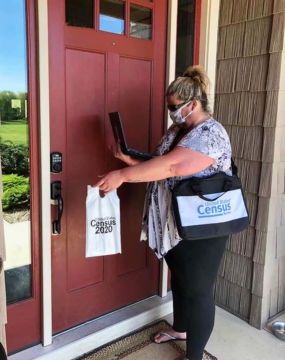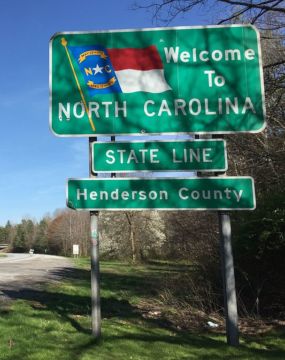Welcome to our blog
Keep up with our latest demographic insights

Nationally, rural counties reported a record number for new COVID-19 infections between September 20-26, according to a recent report from the Daily Yonder. More than half of rural counties nationwide—990—were in the red zone, meaning that they had more than 100 new cases per 100,000 residents in a one-week period. [alert type= "info" title = "Defining the 'Red Zone'" body= "According to the White House Coronavirus Task Force, the red zone corresponds to 101 or…

A federal judge ruled that the Census count must be extended to October 31 and cannot end a month early. The order also extends the tallying process by four months, as originally requested by the Bureau in April. While an appeal is expected, as of now, the 2020 Census self-response deadline is October 31, 2020, not September 30. This is good news for North Carolina, because we have significant work to do to ensure a…

Note: As of today, September 22, 2020, the 2020 Census self-response period will officially end on September 30. This end date is still under deliberation, however, and may shift back to October 31, depending upon the outcome of an ongoing legal challenge. We have one more week to count all North Carolina households in the 2020 Census. Here's how North Carolina is doing as of September 21st: North Carolina's response is low compared to other…

We are sharing the testimony of Stacey Carless, the Executive Director of the NC Counts Coalition, who is testifying before the House Committee on Oversight and Reform today on "Providing the Census Bureau with the time to produce a complete and accurate Census." The PDF version of her testimony is here. September 10, 2020 Chairwoman Maloney, Ranking Member Comer, and Members of the Committee: I am Stacey Carless, Executive Director of NC Counts Coalition. I…

It’s been almost four years since the 2016 general election and in that time, there have been demographic shifts in North Carolina. With just two months before the 2020 election cycle, we’ve broken down the changes by partisan composition and who makes up our newly registered voting population. First, we should note: our state’s population continues to grow North Carolina has experienced steady population gains since 2016, with net gains masking a larger turnover in…

As of July 25th, 2020, North Carolina had 7 million registered voters. Of these, 2.3 million or 33% were registered unaffiliated. This post examines the characteristics of NC’s unaffiliated voters. Age Younger voters are the most likely to register as unaffiliated. Forty-three percent of voters ages 18-34 are registered unaffiliated compared to 35% of voters ages 35-54, 26% of voters ages 55-74, and 21% of voters 75 and older. As a result, younger adults, especially…

Since office and school closures began in response to the COVID-19 pandemic earlier this year, remote workers and students across the state have been feeling the effects of decreased network speed and sputtering performance on their home networks, leading some to question whether their home internet service is up to the task of keeping them connected with remote co-workers, classmates, and professors. It has even led some policy makers to question if now is the…

Non-Response Follow-Up (NRFU) for the 2020 Census began nationwide on Tuesday, August 11th. Last week, the Census Bureau began releasing daily reports on total enumeration—the percent of housing units that have self-responded plus the percent that have been captured in NRFU —for the nation and all 50 states, DC., and Puerto Rico. This proportion ranges from 1.7% in Idaho to 29.1% in West Virginia. Based on these reports, North Carolina, and the southeast more broadly,…

As of August 18, 2020, nearly three in five North Carolina households had responded to the census online, by mail, or by phone (59.8%). This is below the national average of 63.9%. It is also below North Carolina’s self-response rate in 2010 (64.8%) by five percentage points, despite the two-and-a-half additional months of self-response compared to the last census due to coronavirus-related extensions. Every household that does not self-respond to the Census must be counted…

This is part of our series looking at NC's registered voters. Other stories include an overview of NC's voters and an in-depth look at NC's Democratic voters. As of July 25th, 2020, North Carolina had 7 million registered voters. Of these, 2.1 million or 30% were registered as a Republican. Age Younger voters are the least likely to register as Republican, reflecting their higher affinity for registering unaffiliated. Just 23% of voters ages 18-34 are…
Your support is critical to our mission of measuring, understanding, and predicting population change and its impact. Donate to Carolina Demography today.